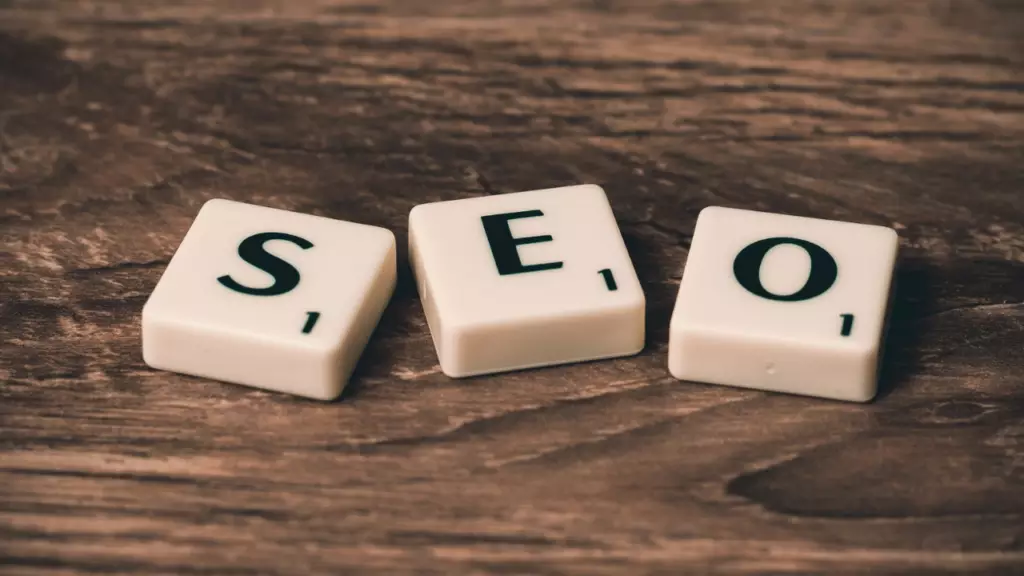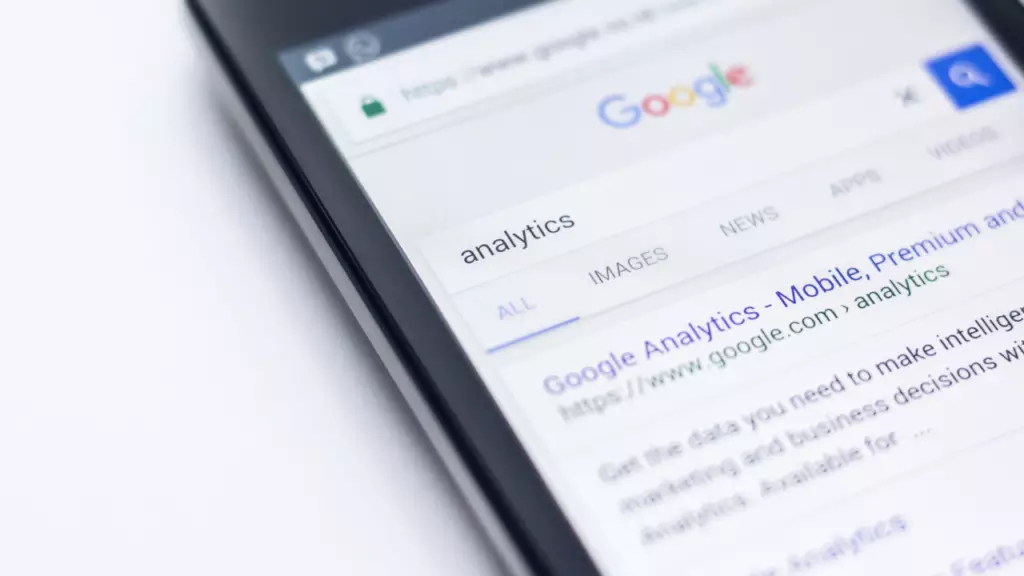SEO vs SEM Marketing: Search engine optimization (SEO) and search engine marketing (SEM) are two digital marketing strategies that are often confused for one another. Both are essential for online businesses, but they have different objectives and should be implemented in different ways. In this article, we’ll explore the differences between SEO and SEM and how they can be used together to drive more traffic and conversions to your website.
SEO vs SEM Marketing: Understanding the Differences
What is SEO?

Search Engine Optimization (SEO) is the process of optimizing your website and its content to rank higher in search engine results pages (SERPs). This is done by making sure that your website is technically sound, user-friendly, and contains high-quality content that is relevant to the keywords that people are searching for. Search Engine Optimization is all about making your website as visible as possible to search engines, so that it can be easily found by users looking for the products or services that you offer.
What is SEM?

Search Engine Marketing (SEM) is the process of using paid advertising to increase visibility and drive more traffic to your website. This can include using Google AdWords, Bing Ads, or other platforms to create ads that appear at the top of search engine results pages (SERPs) when people search for specific keywords. Search marketing is all about using paid advertising to quickly and effectively drive more seo traffic to your website, and can be a great way to complement your SEO efforts.
How to Use SEO and SEM Together
While SEO and SEM are two distinct digital marketing concepts, they can be used together to achieve the best results. By optimizing your website for search engines and using paid advertising, you can increase your visibility and drive more traffic to your website. Here are some tips on how to use SEO and SEM together:
Start with SEO
Before you start spending money on SEM, make sure that your website is optimized for search engines. This includes making sure that your website is technically sound by working on your technical seo, user-friendly, and contains high-quality content that is relevant to your target audience.
Use Long-Tail Keywords
When creating your google ad for SEM, use long-tail keywords that are highly targeted to your target audience. This will help to increase the chances of your ads appearing in front of the right people in the paid search area.
Use Negative Keywords
When creating ads for SEM, use negative keywords to exclude any irrelevant traffic. This will help to increase the chances of your ads appearing in front of the right people in the paid search.
Track Your Results
Use tools like Google Analytics to track your organic search results and see how your SEO and SEM efforts are impacting your website’s traffic and conversions.
SEO vs SEM Marketing: Understanding their Importance
SEO and SEM are both essential digital marketing strategies for any business looking to establish and maintain a strong online presence. Without these strategies, it can be difficult for potential customers to find your website and learn about the products or services that you offer. In today’s digital age, having a strong online presence is more important than ever, as more and more consumers turn to the internet to find the products and services they need.
One of the main benefits of SEO is that it can help to increase the visibility of your website in search engine result pages (SERPs). When your website appears at the top of SERPs, it is more likely to be seen by potential customers, which can lead to increased traffic and conversions. Additionally, technical SEO can help to improve the user experience of your website, making it more likely that visitors will stay on your site and explore the products and services that you offer.
SEM, on the other hand, is all about using paid advertising to drive more paid search traffic to your website. By creating a paid ad that appear at the top of the search result when people search for specific keywords, you can quickly and effectively increase your visibility and get more website traffic. This can be a great way to complement your SEO efforts, as it can help to quickly boost your website’s visibility and grow your small business.
Optimizing Your Website for SEO
One of the most important aspects of SEO is making sure that your website is optimized for search engines. This includes making sure that your website is technically sound by optimizing your technical SEO, user-friendly, and contains high-quality content that is relevant to your target audience. By taking the time to optimize your website for SEO, you can improve your website’s visibility and increase your chances of appearing at the top of organic search results.
One of the first things that you should do when optimizing your website for SEO is to make sure that your site is technically sound. This includes making sure that your site is mobile-friendly, has a fast loading time, and is easy to navigate. Additionally, you should make sure that your site is properly structured and that all of your content is well-organized and easy to find.
Another important aspect of SEO is creating high-quality content that is relevant to your target audience. This includes using keywords that are relevant to your products or services, and making sure that your content is well-written and informative. Additionally, you should make sure that your content is regularly updated with fresh and relevant information, as this can help to keep your site at the top of organic search result.
Using SEM to Drive More Traffic to Your Website
As mentioned earlier, SEM is all about using paid advertising to drive more traffic to your website. By creating ads that appear at the top of SERPs when people search for specific keywords, you can quickly and effectively increase your visibility and drive more traffic to your web page.
When creating PPC Ad (Pay Per Click) for search marketing, it is important to use long-tail keywords that are highly targeted to your target audience. This will help to increase the chances of your ads appearing in front of the right people, and can help to increase the chances of your ads being clicked on. Additionally, you should use negative keywords to exclude any irrelevant traffic, as this can help to increase the chances of your ads appearing in front of the right people.
Tracking Your Results

One of the most important things that you can do when using SEO and SEM together is to track your results. By using tools like Google Analytics, you can see how your search marketing efforts are impacting your website’s traffic and conversions. This can help you to identify what is working well and what needs to be improved, and can help you to make data-driven decisions about how to optimize your efforts.
Some of the key metrics that you should track include:
- Traffic: See how many people are visiting your site and from where.
- Bounce Rate: Check how many people are leaving your site after only viewing one page.
- Conversion Rate: See how many people are taking the desired action on your site (e.g. making a purchase, filling out a form, etc.).
- Keyword Rankings: Monitor how your site is ranking for the keywords that you are targeting.
The Importance of Keyword Research for SEO and SEM
Keyword research is an essential part of an SEO campaign and SEM campaign. It is the process of identifying the keywords and phrases that people are using to search for products or services like yours. By understanding the keywords that your target audience is using, you can optimize your website and advertising campaigns to reach more people who are searching for what you have to offer.
Conducting keyword research is relatively easy, you can use tools like Google Keyword Planner to find keywords that are relevant to your business and audience. These tools will show you the search volume, competition, and suggested bid for each keyword, which can help you to identify the best keywords to target.
When selecting keywords for your business, it is important to choose keywords that are relevant to your products or services, and that have a high search volume. You should also consider the competition for each keyword, and make sure that you can realistically rank for the keywords that you choose. Long-tail keywords, which are longer and more specific phrases, are often easier to rank for than short, broad keywords.
Once you’ve identified the right keywords, it is important to use them in your website content and meta tags in a natural and relevant way. This includes using them in title tags, meta descriptions, and throughout your content marketing strategy in a way that sounds natural and is easy to read. Avoid keyword stuffing, which is the practice of overusing keywords in an effort to manipulate search engine rankings.
On page SEO Techniques for Improved Visibility
On-page SEO refers to the techniques used on your website to improve its visibility in search engine results page (SERPs). This includes optimizing title tags and meta descriptions, which are the snippets of text that appear in search results (SERPs), internal linking and navigation, and optimizing images and videos.
Title tags and meta descriptions are important elements of on-page SEO as they provide the first impression to users and search engine crawlers. Make sure that the title tags and meta descriptions are relevant, unique, and compelling. They should accurately describe the content of the page and include the primary keywords. This will help increase the click-through rate (CTR) of your website in the SERPs.
Internal linking and navigation are also important for on-page SEO. They help search engines understand the structure of your website and the relationships between the pages. Make sure that your website has a clear and logical structure that is easy for users and search engines to navigate.
Images and videos are also an important part of on-page SEO. They can help to make your website more engaging and can also help to improve its visibility in search engines. When optimizing images and videos, make sure to use descriptive file names, alt tags, and captions. This will help search engines understand the content of your images and videos and make it more likely that they will appear in image and video search results.
Off page SEO Strategies for Building Backlinks

Off-page SEO refers to the techniques used outside of your website to improve its visibility in search engine results pages (SERPs). One of the most important off-page SEO techniques is building backlinks. Backlinks are links from other websites that point to your website. They are important because they signal to search engines that other websites consider your content to be valuable. This can help to increase your website’s visibility in search engine results pages (SERPs).
There are many ways to build backlinks. One of the most effective ways is guest blogging. By writing guest blog posts for other websites in your niche, you can include a link back to your own website, which can help to build backlinks. Another effective strategy is broken link building, which involves finding broken links on other websites and offering to replace them with a link to your own website.
Social media marketing can also be a powerful tool for building backlinks. By sharing your content on social media, you can attract more visitors to your website, which can increase the chances of other websites linking to your content. Additionally, you can use social media marketing to build relationships with other websites and bloggers in your niche, which can increase the chances of them linking to your website.
Local SEO is also an important off-page SEO strategy. By optimizing your website for local search, you can improve its visibility in search engine results pages (SERPs) for people searching for products or services in your area. This includes making sure that your website is listed in local business directories, such as Google Business Profile, and that your business information is accurate and consistent across all directories.
Advanced SEM Strategies for Increased ROI

SEM, or search engine marketing, refers to the use of paid advertising to drive more traffic to your website. While SEM can be a powerful tool for driving traffic, it can also be costly if not managed correctly. To maximize your return on investment (ROI), it is important to use advanced SEM search engine marketing strategies that can help to increase conversions and reduce your ppc advertising costs.
Retargeting and remarketing are two advanced SEM strategies that can help to increase conversions. Retargeting is the process of showing ads to people who have previously visited your website. Remarketing is the process of showing ads to people who have previously taken a specific action on your website, such as making a purchase or filling out a form. By using these strategies, you can target people who are most likely to convert.
Another important advanced SEM Ads strategy is A/B testing. A/B testing is the process of creating two versions of an ad and testing them to see which one performs better. This can be done with different ad copy, images, or even targeting. By using A/B testing, you can optimize your ads to improve their performance and increase conversions.
Conversion rate optimization (CRO) is also an important advanced SEM strategy. CRO is the process of optimizing your website to increase the number of visitors who take a specific action, such as making a purchase or filling out a form. This can be done by improving the user experience, making the call-to-action (CTA) more prominent, and by testing different versions of your website. By using CRO, you can increase the performance of your ads and get more out of your SEM budget.
Measuring and Analyzing Your Results
Measuring and analyzing your SEO results and SEM results is essential to understanding the impact of your efforts and making data-driven decisions. By using tools like Google Analytics, you can track your website’s traffic, bounce rate, conversion rate, and more. This information can help you to understand how your SEO and SEM efforts are impacting your website’s performance and identify areas in your marketing strategy for improvement.
It is also important to analyze your SEO and SEM results to identify which tricks and tactics are working well in your marketing strategy and which ones need to be improved. This can help you to optimize your efforts and make data-driven decisions about how to improve your online presence. Additionally, it’s important to report your results to stakeholders, including your team, your boss, and your clients, in an easy-to-understand way.
By regularly monitoring your website’s traffic, conversions, and rankings, you can identify areas for improvement and optimize your efforts to increase visibility and drive more traffic and conversions to your website. Additionally, by regularly reporting your results to stakeholders, you can demonstrate the value of your efforts and make a case for continued investment in SEO and SEM.
By implementing the strategies and techniques discussed in this article, including keyword research, on-page optimization, off-page optimization, advanced SEM strategies, and measuring and analyzing your results, you can boost your online presence and improve your ROI.
It is also important to note that SEO and SEM are constantly evolving and it is important to stay up to date with the latest trends and best practices. Search engines are always changing their algorithms and the way they rank websites, so it is essential to adapt your SEO and SEM strategies accordingly. Additionally, new technologies and platforms are constantly emerging, so it is important to stay informed about new opportunities for driving traffic and increasing conversions.
In addition to staying up to date with the latest trends and best practices, it’s also important to remember that SEO and SEM are long-term efforts. It takes time and consistent effort to see results. There are no shortcuts or quick fixes for achieving high rankings and driving traffic to your website. It takes ongoing effort to create high-quality content, optimize your website, and build backlinks.
Overall, SEO and SEM are both important strategies for any business looking to establish and maintain a strong online presence. By understanding the differences between the two, and how to use them together, you can increase your visibility and drive more traffic and conversions to your website. By staying up to date with the latest trends and best practices and by making a long-term commitment to SEO and SEM, you can improve your online presence and achieve your business goals.
Conclusion
SEO and SEM are both essential for any business looking to establish and maintain a strong online presence. By understanding the differences between the two, and how to use them together, you can increase your visibility and drive more traffic and conversions to your website. By optimizing your website for SEO, and using SEM to drive more traffic, you can improve your website’s visibility and increase your chances of appearing at the top of SERPs. Additionally, by tracking your results, you can see how your efforts are impacting your website’s traffic and conversions, and make data-driven decisions about how to optimize your efforts.






